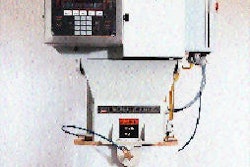The regulation, which is a response to a petition filed by Eastman Chemical (Kingsport, TN) in 1988, will boost efforts by Eastman, Shell Chemical (Akron, OH) and other resin marketers involved with PEN to develop food applications for the material. Similar to PET, PEN differs in that its main ingredient is naphthalate dicarboxylate, which gives it barrier properties as well as heat and chemical resistance far superior to those of PET (see PW, July '95, p. 27). PEN is also costly, probably in the range of four to five times the cost of PET. One way to minimize the cost yet still benefit from PEN's unique properties is by relying on copolymers or blends rather than homopolymer PEN. While the new regulation, published April 4 in the Federal Register, does not approve PEN copolymers or PET/PEN blends for food contact, industry observers expect such approval to follow in relatively short order. The FDA ruling is unusual because it requires that articles made with PEN be identified so that both consumers and sorters can recognize them "easily and quickly." The concern: Unless PEN bottles are clearly recognizeable, they might interfere with recycling of plastic containers made from other resins. Apparently the required mark will be something other than one of the seven identifying numbers developed by the Society of the Plastics Industry. That much became clear on April 16 at Bev-Pak '96, sponsored by Directions 21 (Sarasota, FL). There, Eastman's Jim Caldwell urged "all PEN stake holders to reach consensus on a common identifying mark." Caldwell even showed the audience a possibility, though he freely admitted it was offered primarily to get the stake holder conversation going. The image shown by Caldwell: that long-ago writing instrument known as a "quill," which now is known as a PEN.
PEN homopolymer okay for food contact
The U.S. Food and Drug Administration has issued a long-awaited regulation permitting the use of polyethylene naphthalate homopolymer for food packaging.
Apr 30, 1996
Companies in this article
Machinery Basics
How AI is reshaping CPG manufacturing operations
Today’s CPG companies are faced with mounting challenges in their manufacturing operations. You have the data that could help you, but can you turn that data into knowledge? See how artificial intelligence can help. Learn what’s working for Pfizer, Post, and Smithfield.
Read More





















